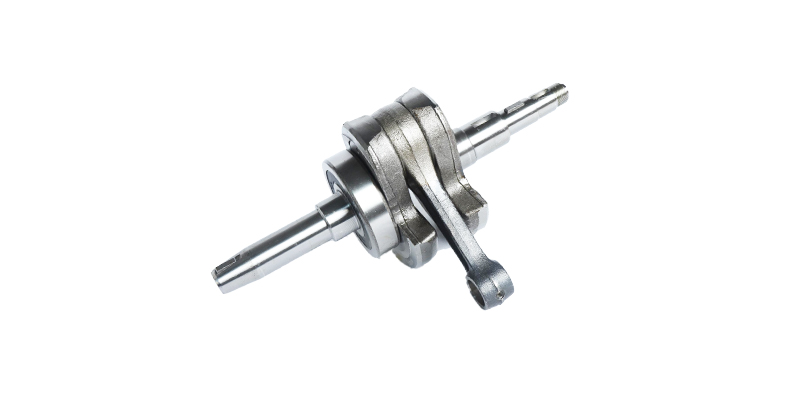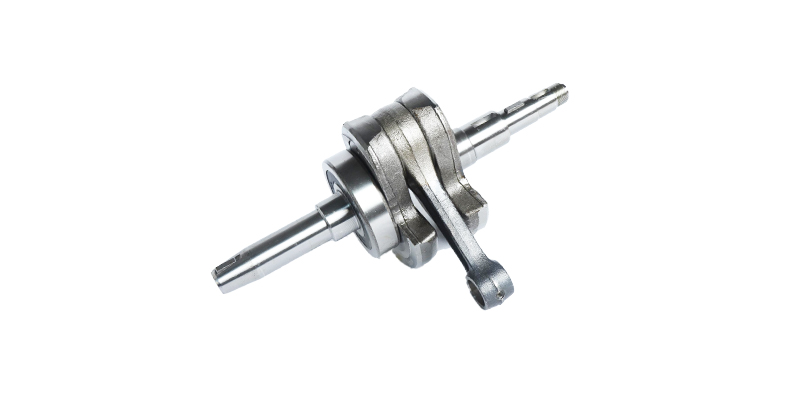- Contact Innally, Let you purchase forgings in China more favorable prices, products more assured!
- Hotline:+(86)15038323776 Email:innally@innally.com
What is motorcycle crankshaft forging?
- Category: Motorcycle forging, Steel forgings
- |
- Date: 21/08/2023
motorcycle crankshaft forgings are key transmission parts in motorcycle engines, driving wheel movement by converting piston up and down motion into rotary motion. The quality of its design and manufacture directly affects the performance and reliability of the engine.
- Can be customized according to the specific model
Product Details
Motorcycle crankshaft forging is one of the key parts in motorcycle engine, it assumes the important function of converting piston up and down motion into rotary motion. Motorcycle crankshaft forgings are usually made of high strength alloy steel by hot forging process.
Motorcycle crankshaft forging is the power transmission device of the engine, through close coordination with the connecting rod, the up and down reciprocating movement of the piston into a continuous rotating movement, in order to drive the wheel movement, and drive the work of other accessories, such as generators, water pumps, etc. Therefore, the design and manufacturing quality of motorcycle crankshaft forgings are directly related to the performance and reliability of the engine.

Several key factors need to be considered in the design and manufacture of motorcycle crankshaft forgings. The first is the material selection, motorcycle crankshaft forgings usually use high-strength alloy steel materials, such as 30CrNiMo8, 40CrNiMoA, etc., to ensure sufficient strength and toughness. The second is the process design, forging geometry, size and structure must meet the crankshaft movement characteristics and connection requirements. In the forging process, parameters such as temperature, forging force and mold shape need to be controlled to ensure the accurate size and good internal organization of the crankshaft forgings.
The manufacturing process of motorcycle crankshaft forgings generally includes the following key steps. The first is the preheating treatment of the steel, by heating the steel to reach the appropriate forging temperature to increase its plasticity. Hot forging is then carried out in a dedicated die, using mechanical force to press and deform the heated steel to form the initial shape of the crankshaft forgings. Next, after many forging, trimming and correction, the final shape and size of the crankshaft are gradually obtained. Finally, the strength and hardness of crankshaft forgings are improved by heat treatment processes, such as tempering and surface quenching.
The quality of motorcycle crankshaft forgings is crucial to the performance and reliability of the engine. A properly designed and accurately manufactured crankshaft forging can effectively improve the stability and output power of the engine, and extend the service life of the engine. Therefore, in the manufacturing process, each process must be strictly controlled to ensure that the geometric accuracy, internal organization and surface quality of the crankshaft forgings meet the requirements.
To sum up, motorcycle crankshaft forgings are key transmission parts in motorcycle engines, driving wheel movement by converting piston up and down motion into rotary motion. The quality of its design and manufacture directly affects the performance and reliability of the engine. High quality crankshaft forgings increase engine power output and reliability for a better driving experience and riding safety.
ayu
INNALLY mainly provides you with various types of cast and forged parts products. Welcome your inquiries! innally@innally.com
Search
Forging center
- Steel forgings
- Aluminium alloy forging
- Titanium alloy forging
- Stainless steel forging
- Copper forging
- Automotive forgings
- Locomotive forging
- Bicycle forgings
- Motorcycle forging
- Rigging and fasteners
- Bearing forging
- Electric power fittings
- Marine forging
- Mechanical forgings for metalworking
- Mining machinery forgings
- Marine engineering forgings
- Construction machinery forgings
Popular product

© 2025. All Rights Reserved.







